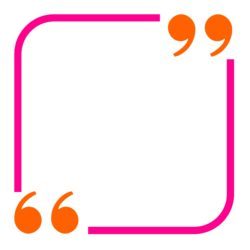You Can Quote Me on This: Quotation Marks
 People always have questions about using quotation marks. This post will talk about using quotation marks in actual dialogue. But quotations marks are used for other things besides direct quotes from people speaking. Next week’s post will talk about those other uses for quotation marks.
People always have questions about using quotation marks. This post will talk about using quotation marks in actual dialogue. But quotations marks are used for other things besides direct quotes from people speaking. Next week’s post will talk about those other uses for quotation marks.
Single quotes. Single quotation marks ( ‘ ) have only one use: quotes inside of other quotes. If you are quoting someone and you need to put something in quotes inside that quote, use single quotation marks:
She said, “There must be a million songs with the title ‘I Love You,’ so I will call my song something else.”
He replied, “I haven’t actually heard any songs that are called ‘I Love You.'” (There is no space needed between the single and double quotes when they come right after one another. )
Quotation marks used with other punctuation. Simple rules apply here for American English. British English is different.
Periods and commas ALWAYS go inside the quotation marks, no matter what. No exceptions.
It isn’t that common to find semicolons and colons used with quotations marks, but if they are, they go outside the quotation marks, no matter what.
She announced, “I am so tired”; about 10 seconds later she was asleep.
Question marks (and exclamation points) can go either inside or outside, depending.
I heard Suzie ask, “Are we there yet?” (Quote is a question, but the entire sentence is not. But use no period at the end.)
Was that Suzie who said, “I hope we are there soon”? (Entire sentence is a question, but not the quoted part.)
Did Suzie ask, “Are we there yet?” (Both the whole sentence and the quote are questions. Use only one question mark. Inside.)
Examples of dialogue. Quotation marks are most commonly used for direct quotes and dialogue. A few authors have given up using quotation marks for dialogue and use dashes instead, for example, Cormac McCarthy. I would think it would be difficult to read unless the dialogue consisted of one liners, back and forth between two people.
— Give me that book!
–It’s mine, and I am not giving it to you.
–I just want to see the cover.
–No! I don’t want you to see it.
–Why? What is the big deal?
But most people still use quotation marks. Here are some examples of punctuating and capitalizing dialogue (or just direct quotes).
She said, “I expect you to be home by midnight.”
“I will try,” he replied, “but I am not sure I can get a ride that early.”
“Make sure you can before you go,” she said. “You will be grounded if you are any later!”
“I will try my best—”
“That isn’t good enough!” his mother interrupted.
Multi-paragraph quotations. Sometimes the same character will speak for more than one paragraph, or you will be quoting a speech that is multiple paragraphs long. How you do punctuate? Use opening quotation marks for every paragraph. Use closing quotation marks for the final quoted paragraph only.
NEXT WEEK: Other uses for quotation marks other than dialogue (or the exact words someone speaks).



